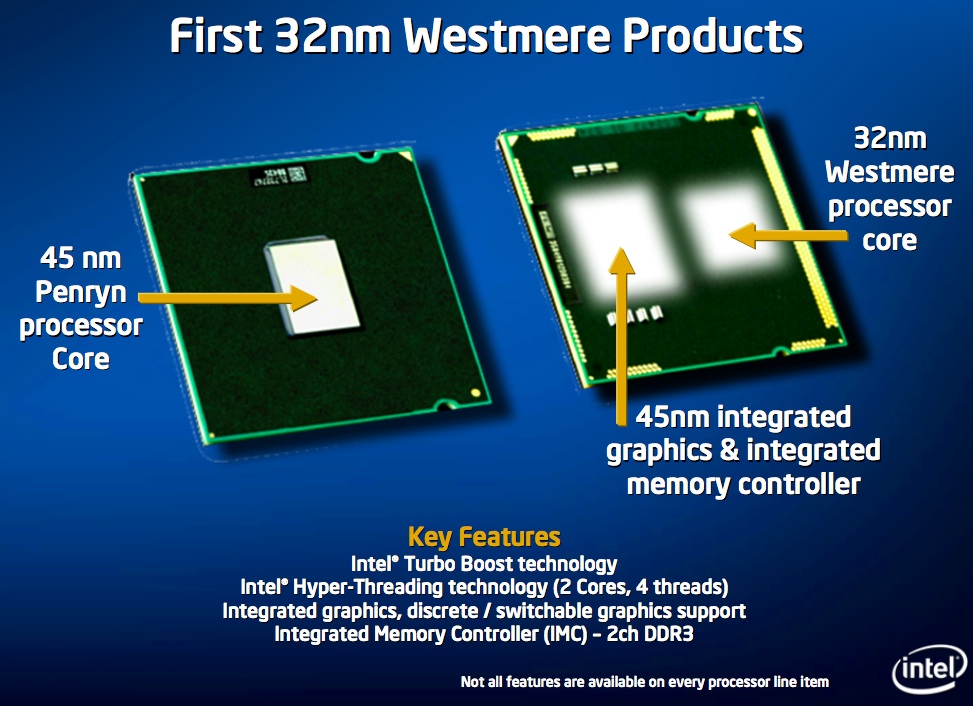Intel's 32nm Core i7 Coming this Year
On a telephone briefing today, Intel announced that its 32 nm processors will begin production later this year, specifically in the 4th quarter of 2009.
Intel is in the process of bringing Core i7 down to a 32 nm fabrication process and will begin production and shipping of the processor in the second half of 2009. The new 32 nm platform is codenamed Westmere and is comprised of two 32 nm Core i7 processors and a new chipset family called the Intel 5-series (P55 and P57). With the move to 32 nm, Intel will free up room on the package to integrate graphics. With Westmere-based Core i7 processors, the first series of products will come with a 45nm integrated graphics core and memory controller, on a separate die, on the same processor.
According to Intel, the following processors will be on their way later this year:
Desktop Performance / Mainstream:
Clarkdale: 2 cores / 4 threads, with integrated graphics/memory controller
Mobile Extreme / Mainstream:
Arrandale: 2 cores /4 threads, with integrated graphics/memory controller
Intel will be utilizing existing graphics technologies, manufacture the integrated graphics die at 45nm and not be using any new graphics technologies--specifically Larrabee.
Prior to the two 32 nm Core i7 products above, Intel will release Lynnfield and Clarksfield for the desktop and mobile markets, respectively. Both of which will be 45 nm Core i7 processors offering four cores/eight threads with the same on-die memory controller as existing i7 CPUs. All four processors will be running on the Intel 5-series chipset family as well. While Intel did say that 32 nm processors will begin production later in the year, Intel hesitated to indicate when products from OEMs will begin to be available on the market.
Get Tom's Hardware's best news and in-depth reviews, straight to your inbox.
Once Intel's Westmere platform is on the market, Intel will begin its next transition into a future platform called Sandy Bridge, which will succeed the Nehalem microarchitecture.
